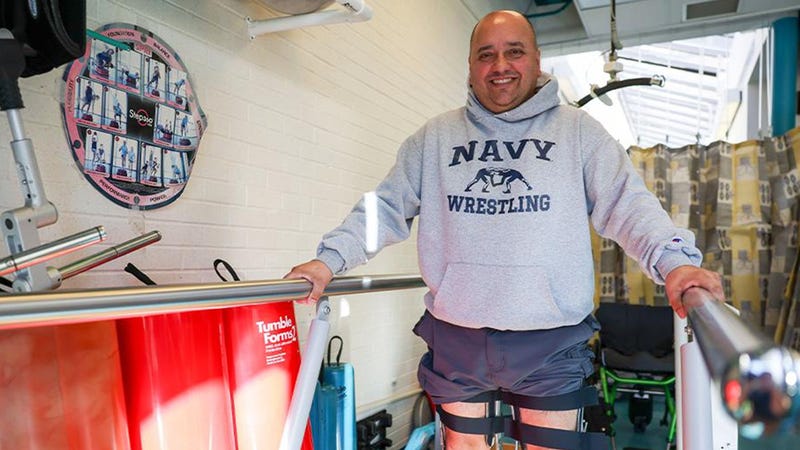
Before losing the use of his legs, veteran Edward Afanador served in the Army, Air Force and Marine Corps, and was a part of the response to the collapse of the World Trade Center.
Years later, Afanador was diagnosed with distal motor sensory axonal polyneuropathy, which over time causes the loss of the ability to walk.
Afanador was recently given the chance to walk again when the Wilmington VA Prosthetics Department invited him to be a part of a trial for a device called a microprocessor-controlled C-brace.
The C-brace “is similar to an exoskeleton,” said Corey Smith, Wilmington VA chief of prosthetics. “It makes the limbs capable of standing and swinging.”
Afanador was reluctant to try the device at first.
“I fall a lot, so it is hard trying something new because I wanted to limit my falls, but I decided I didn’t want to just live with not being able to walk,” he said. “I said, let’s try, I’ll do whatever’s needed to be done. We veterans have to try to progress or else we can get stuck.”
Previously, Afanador had struggled with PTSD as well as the loss of his ability to walk. He was fortunate to get help from a group of Vietnam veterans. That experience inspired him to give back to his fellow veterans through various VA and non-VA programs.
“It starts with talking and listening without judgment,” said Afanador. “It’s not about how many people I have helped, but how many have helped me.”
Afanador went on to represent Wilmington VA at the National Veterans Wheelchair Games in Philadelphia and joined a peer mentoring, camaraderie and support program to help veterans in crisis.
Giving back
“It’s all about giving back, that has always been my mantra,” said Afanador. “You invest in them and it comes back ten-fold, it becomes cathartic.”
Thanks to his new C-brace, Afanador has become more active in the community.
“It has reinvigorated me to be out there,” said Afanador. “For the longest time I had to be in a chair or carry a cane, so it pulls you away from things. Now that I can walk, it changes everything. It makes me want to be more involved and be out with everyone. I can carry things, and I can stand up straight. It’s a new lease on life.”
He was even able to tour college campuses with his son.
“I’ve been afforded an opportunity most don’t get,” said Afanador. “You have no idea the difference it makes. It’s a new lease on life.”
For assistance with prosthetics, contact your VA primary care provider.
